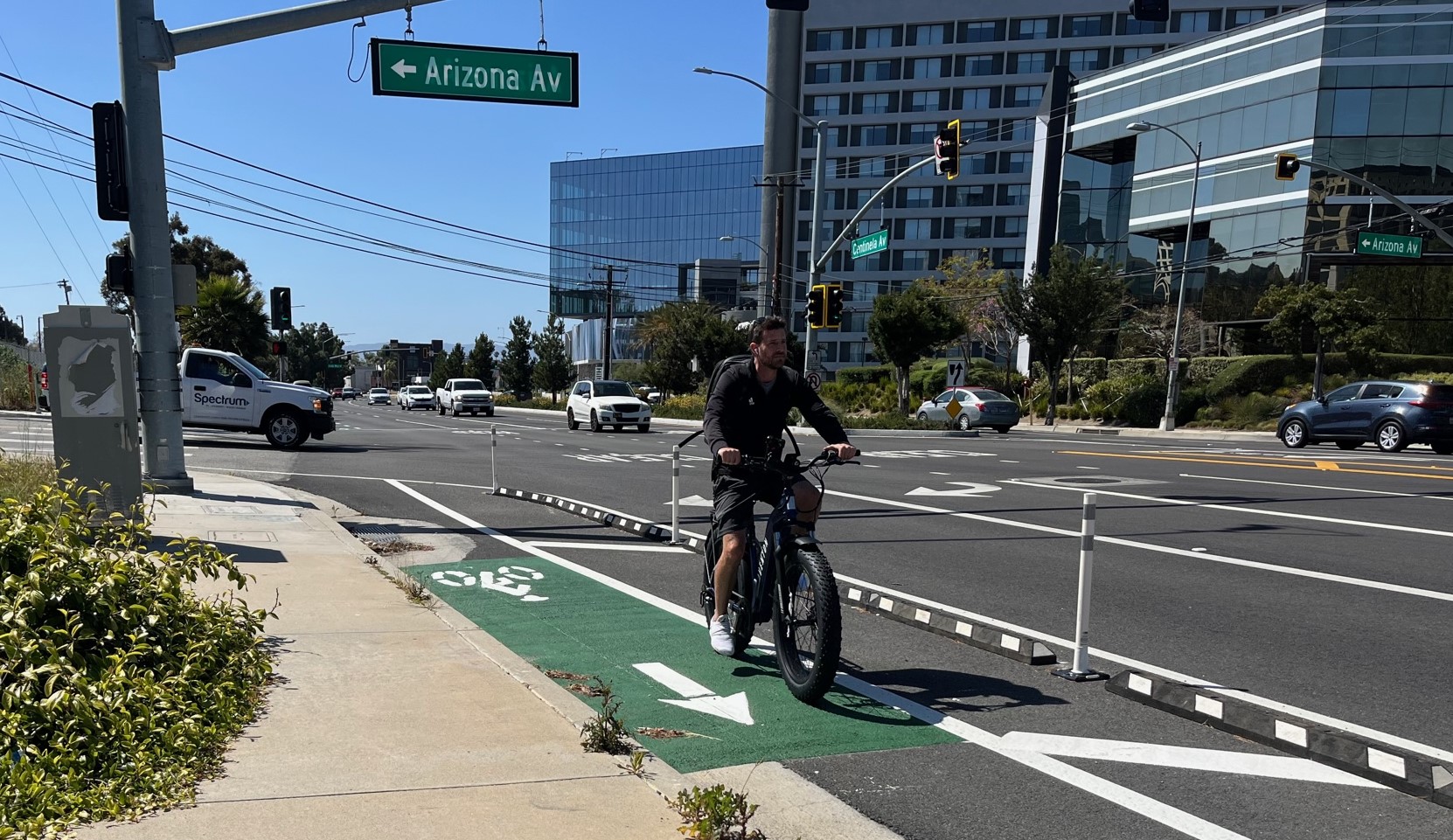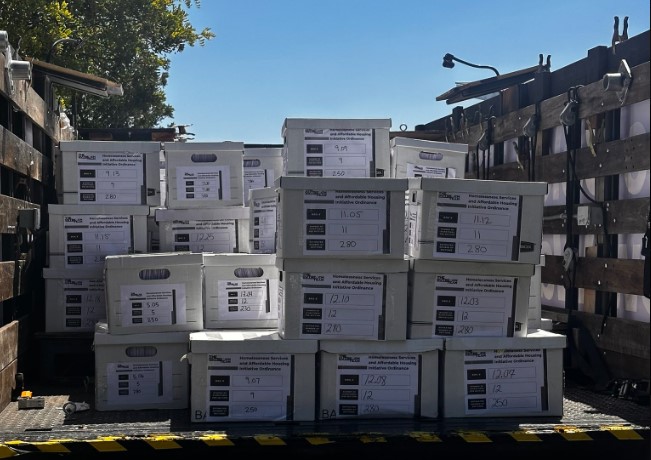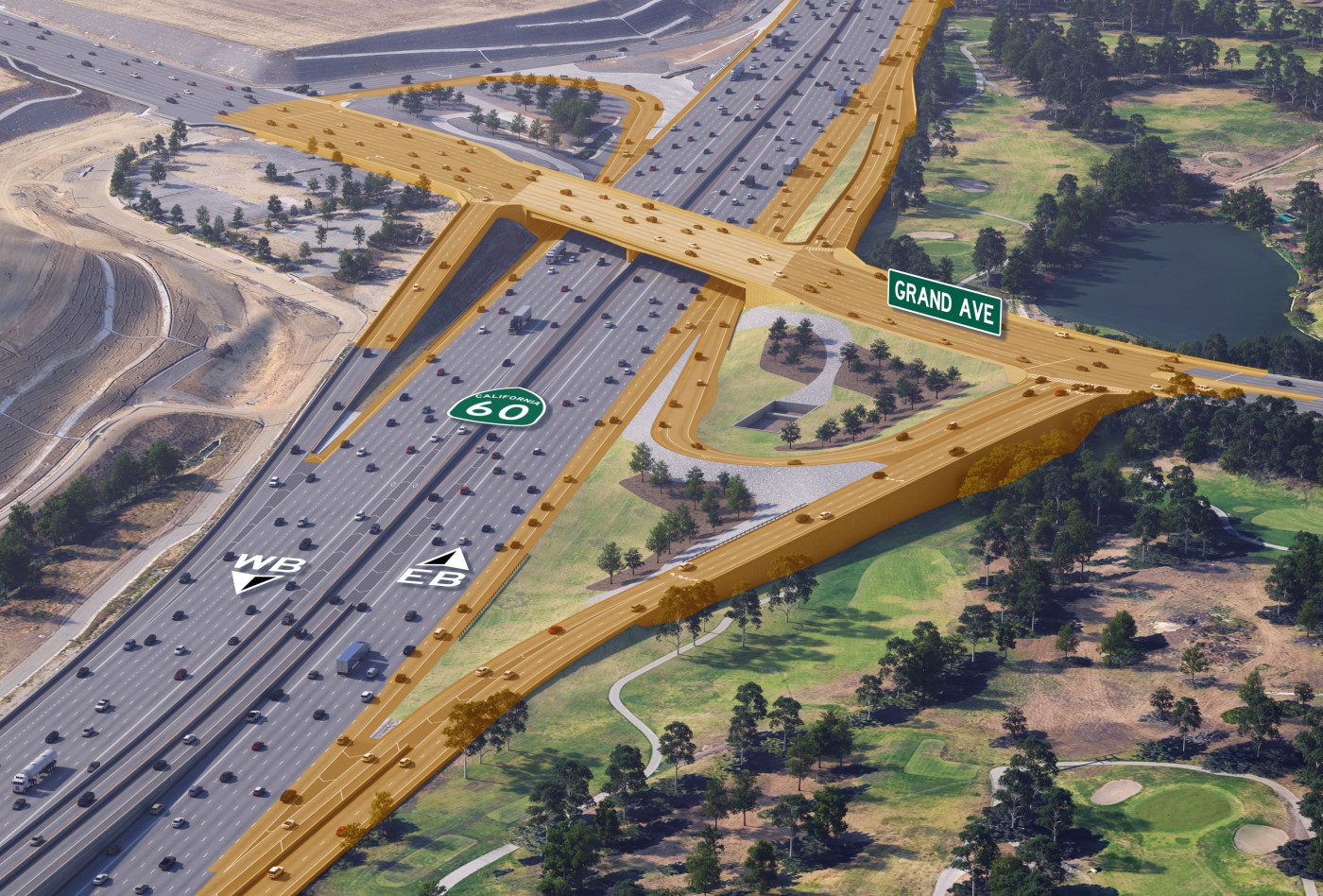Interview with Whittier City Councilmember Fernando Dutra
1:33 PM PST on February 16, 2021

Whittier City Councilmember Fernando Dutra – via Dutra website
Fernando Dutra has served on the Whittier City Council since 2012. Dutra is President of Allwest Development Company. His website touts his record of prioritizing fiscal responsibility, fighting crime, community input, capital improvements, and smart economic growth.
On January 6, Dutra was elected to the Metro board by the city representatives from the Southeast Long Beach sector, where Long Beach Mayor Robert Garcia had chosen not to run for another term. Dutra’s appointment to the Metro board was expected to be ratified by the full countywide City Selection Committee, but, at their meeting on January 25, he did not receive sufficient votes. This pushed the election back down to the Southeast sector, which will reconvene this Thursday February 18 at 10 a.m. - details at meeting agenda.
This interview was conducted over the phone on Friday February 12 and has been edited for clarity and readability.
Streetsblog: Let Streetsblog readers know about your background, perhaps some of your upbringing and life story.
Fernando Dutra: I was born on a small island in the middle of the Atlantic Ocean - the Azores. I lived there for some of my childhood, and then my mom, dad, and I moved to Africa. My mom was teaching school in certain parts of Africa so as a young man I got exposed to different parts of the world.
From there we moved to Boston, where I lived for a number of years. Ultimately, we ended up in Southern California. I went to school in Long Beach and to Cal Poly Pomona.
I’ve been in the construction industry my whole life. Through the years, I rose through the ranks of building corporate management - worked my way up from being a union carpenter to a superintendent and to a project manager to a vice president of operations for a couple of national developers. I started my company in 2004 and never looked back.
I married my wife in 1986, which was the best thing that could have happened to me. We have three great kids who have all become successful independent children. I couldn’t ask for anything better.
As for my own company, we’ve built affordable housing, student housing, all kinds of homes and projects - commercial, residential, retail, and restaurants. We do street improvements, storm drain, sewer, water, and major grading.
I simply started out as a kid in the Azores and wound up fortunately living in the United States. So I am an immigrant, and became a naturalized citizen in 1986. As an immigrant, I can’t tell you how fortunate I feel every day to live in this country, where I've had so many great opportunities. I’m thankful every day.
Given your interest in serving at Metro, how do you typically get around?
Being in the construction/development industry you’ve got to drive, right? You have to go from project to project. Years ago I figured out that driving those great big trucks just wasn't for me and I was fortunate enough to not need to, because I was managing the company.
I drive a Prius. I have for over ten years. And I love my Prius.
I still have a big truck, because occasionally I’ve got to do that - but every time I get in my truck I’ve got to pull out the credit card and put more gas in the thing; it’s ridiculous. But 99.9 percent of my driving is in my Prius.
My wife and I have electric bikes. On weekends we like to get up on our electric bikes and ride - either down the Greenway Trail in our city, or around the beach, or to go eat at restaurants, when they were open - now they’re open again, thank god, for outdoor dining. We like to ride our electric bikes. We feel like kids when we do that.
Occasionally, for example when we go down to Long Beach, it’s not unusual for us to take the Blue Line - the Green Line to the Blue Line. We like to take the train when we can. I find it to be relaxing, and a way of not hassling with parking.
Talk about the city of Whitter: maybe tell about what Whittier is, maybe something that you like about it, and maybe a challenge that the city is currently facing?
What I love about Whittier is its hometown feel. We have a great center core of our city which is really a historic part of our city, a lot of historic homes, and we have a balance of new housing as well.
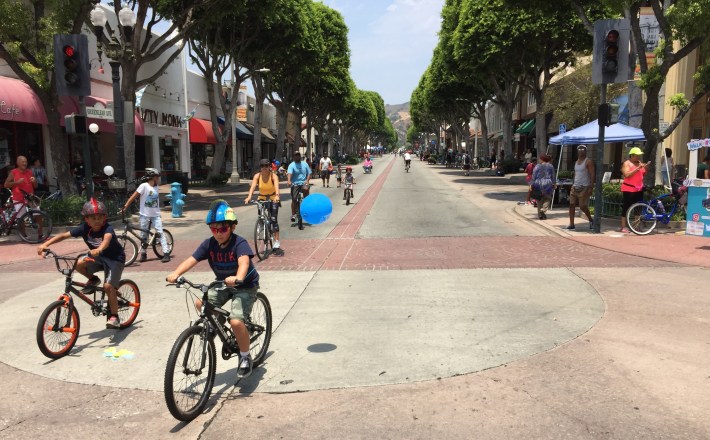
Our city is a great melting pot of different cultures and different races. Think about it, in a small city of our size - eighty-eight thousand - we have two hospitals that service us. We have large shopping areas. We have a brand new project with new homes - called the Groves - and it’s 750 new homes, a blend of different types of housing. We’re very very excited about that.
And Whittier Boulevard - because of our specific plan that I was part of establishing about ten years ago when I was a Planning Commissioner - is developing as well. It’s expanding and doing very very well.
I love our hometown small town feel, yet with all the major accommodations of a major large town.
I love the blend of the cultures. To me that’s the cool thing. You can drive up and down Whittier Boulevard, and eat Mexican food one day, Asian food the next, Greek food the next day, Mediterranean food the next. Everything. I love this city.
The challenge that we have - very similar to all the other cities in our state and our nation are facing - is the COVID pandemic. However, in our city we elected to take $500,000 out of our bank account to establish grants for our businesses, restaurants. I am very proud of that, and we did that right from the beginning.
It’s a progressive town with forward thinkers, very very engaged individuals. Because of, honestly, previous city councils being very prudent, our city has navigated through some of the worst municipal economic downturns and we've made it through. I know that our city is poised to maintain its successful run into the future, because of our financial stability.
I’ve been here for over 35 years. I could live anywhere. I choose to live in Whittier because, for me, it’s perfect. It’s a perfect place to live in.
Let readers know more about the Whittier Greenway Trail you mentioned. (The city of Whittier converted an abandoned rail right-of-way into a 4.5-mile long bike/walk path, which opened in 2009.)
We have this beautiful nationally-recognized Greenway Trail that we are very very proud of.
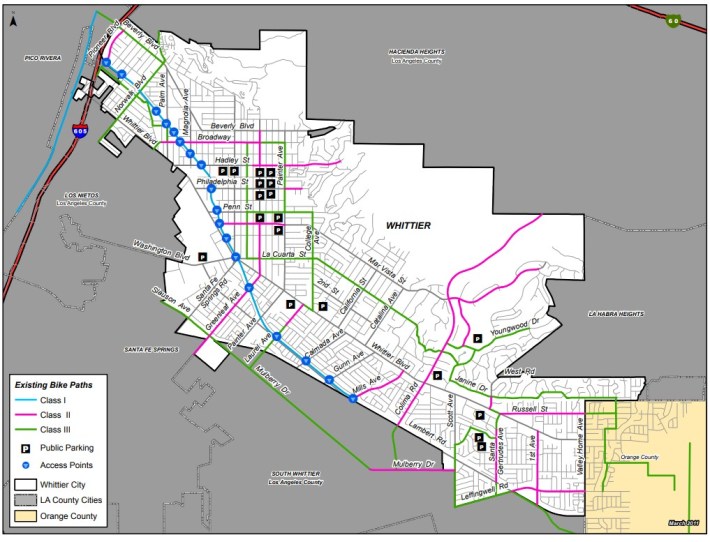
I am part of a coalition to expand our Greenway Trail east, closer towards Orange County. We’re going east from Mills [Avenue] to First [Avenue], right to the La Habra border.
The beautiful thing about that is that the further we go, the more pressure we put on our neighbors to the east. We’ve told Orange County that this is a great opportunity to connect this Greenway Trail all the way to the 57. There’s right-of-way to make that happen. So, we’ll just push it to the edge.
You’ve been an advocate for extending the Eastside Gold Line extension to Whittier, even at a time when it felt like many favored the now-shelved 60 Freeway alignment. Talk about that advocacy, what your vision is, and how you see the line benefitting Whittier and other communities.
There’s no secret that I’ve been a strong advocate and I’m honored that I got to do that. I was lucky to have people pick me to chair the coalition [the Washington Boulevard Coalition] from the beginning.
Here’s the thing about the Gold Line - and the Eco-Rapid West Santa Ana Branch. I have a clear vision for these two alignments and it starts with our entire region. For as long as I can remember our region [the Gateway Cities] has not received the funding that we should have received. A lot of the money has gone to the Westside and gone to other areas. Our region just hasn’t received the monetary amount that we need in order to fulfill our regional needs.

Consider this. Currently, the Gold Line terminates in East L.A. Imagine the alignment coming down Atlantic Boulevard - or whichever one we ultimately choose - and then turning on Telegraph [Road], right there where The Citadel is.
Seventeen million people per year go to The Citadel, the same amount of people that go to Disneyland every year. Imagine the traffic that goes in front of The Citadel.
Imagine, then, our light rail going in front of the casino there, a busy busy place. And then going straight up Washington Boulevard and hitting all of the commercial and workforce areas there.
And terminating in Whittier, right in front of our regional hospital, Presbyterian.
If you can imagine all that, then imagine, within that alignment, all of the TOD [Transit-Oriented Development] opportunities that come with that. You’re creating the vision for transit which is connecting work and play and homes.
No other alignment does that. Some of the analysis that’s been done shows that the Gold Line [Washington Blvd. alignment] will have the larger expected ridership, out of all the alignments. That’s important not just from an economic standpoint, but a sustainability standpoint as well. What’s the purpose of building something unless people are going to ride it?
Imagine all of those dynamics I’ve talked about: the shopping in front of the Citadel, the hospital, the workforce, the TOD opportunities in between. I’ve actually mapped out all of the future TOD opportunities along that alignment, because I love doing this stuff.
So, this region deserves to have these two lines - the Gold Line and the West Santa Ana Branch - same thing - going from Burbank all the way to the city of Artesia.
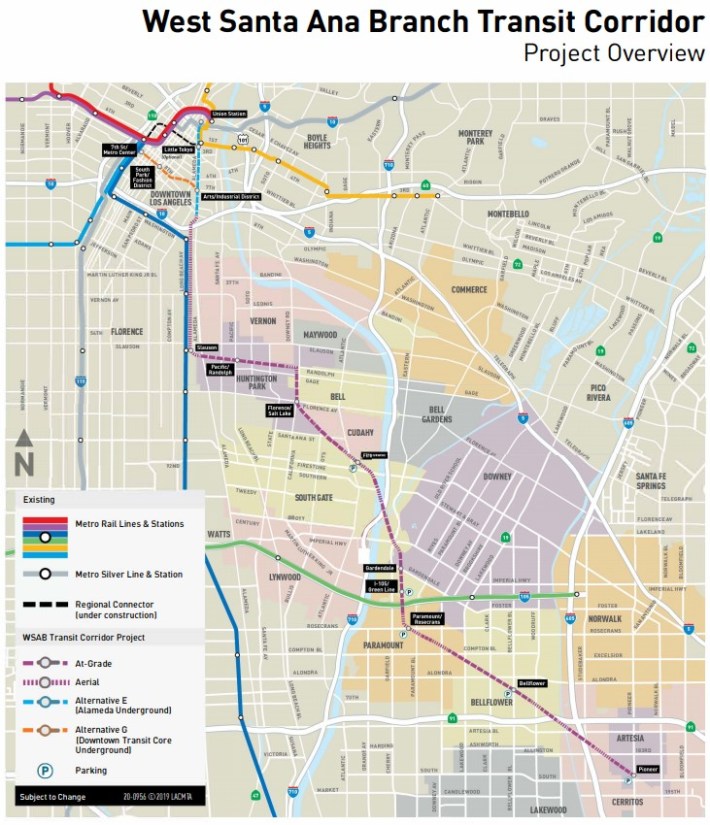
Look, I’m Portuguese. My family spent a lot of time going to Portuguese community events in the city of Artesia. We have close friends in the city of Artesia, so I know a lot of what these light rail alignments will do for the region.
Here’s something you have to consider. Over the years, because our [Gateway Cities] region has not received its fair share of funding for light rail and for mass transportation, I think, what has happened is that a lot of our young people - they go to college. As an immigrant, we all want our kids - I wanted my kids to go to college and do well, and they have. Guess what happens? They move away - to the Westside or to Orange County - because that’s where all the cool stuff is. Unless we start providing this region with some amenities - like light rail, and like great shopping, and like a great blend of housing - the blend of housing is very important - then our talent pool is going to be drained. It’s all going to go to other regions. So it’s important that our region receives the appropriate amount of funding, so that we can retain our talent, and continue to do well.
Also, by doing that, what we will automatically do is it will focus on our communities with the highest needs. Because these two alignments go through some of the communities with the highest needs in all of Southern California. That’s a fact. You can just look at it and you can see it. That’s why it’s important.
I will fight like heck to make sure that we are on the map when it comes to these two lines. Both of them are important and both of them should have an opportunity to be developed.
Also, I understand that these things don’t happen without money. On my own, I have spoken to organizations that will consider doing P3s [Public-Private Partnerships.] I think, in order to make these alignments successful, you need to bring in P3 opportunities.
I can go on forever. I am so jazzed about both of these two light rail alignments, and what they’re going to do for our region. They offer hope. When people see that we are making an investment in our region, there’s hope. When there’s hope there’s progress.
Any other priorities you would have when and if you serve on the Metro board?
It’s not just the light rail lines. The light rails are obviously important for me.
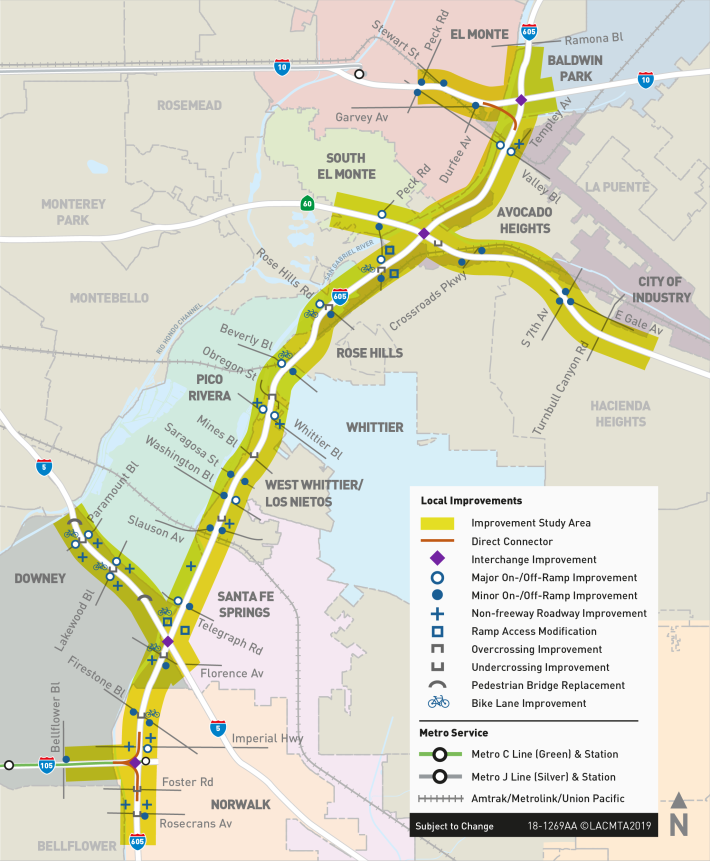
But it’s also dealing with the I-605 project. We have I-605, 91, 710, I-5. All of those projects are important to me, because they reflect an investment in our region and it would help us in our progress to the future.
As a builder, I have to manage my company to a budget and to a schedule. That’s how stuff works. My expectation, if I am honored enough to be elected to the board, is that we’re going to move towards managing to a budget and to a schedule. Because that’s what we elect people to do - not just to go along to get along. We have to have expectations.
I am keenly aware of all of the sub-region improvement projects that are taking place at Metro, and also what their impacts are. Let’s face it, each of these has impacts. Direct environmental impacts, and they’re impacting people’s livelihoods, how they live, what their homes look like, if their homes stay or not. And that’s why it’s so important that you have an advocate on the Metro board who understands the dynamics of all of those, and who will listen to the people, and understand the technicalities and the vernacular of Metro.
As a builder, having worked on street improvement projects my entire life, I understand the dynamics of street improvements, of real estate development, and all of those things - and what the vernacular is. So Metro is talking about right-of-way impacts, and they’re talking about elevational changes that impact right-of-way changes. I think that I’m the right guy for Metro because I have the background. I have a three-dimensional thinking mind, because that’s what I do for a living. This is what I’ve done my entire life. I think my learning curve will be flatter than somebody stepping in from just having been a politician.
It’s not just about politics for me, it’s actually doing the work. I'm not interested in advancing my political career by taking on a Metro position. I’m interested in doing the work, and making something happen. That’s what I'm going to do.
Your appointment to the Metro board hasn’t gone as smoothly as I expected. There’s a Southeast sector meeting coming up this Thursday morning where the Gateway Cities will elect a Metro representative. Do you have any sense of how you expect that to go, or any statement on your appointment process?
First of all, like you, I didn't expect it to be as controversial as it is. I thought that I had done my job and that people trusted my abilities to do this. And I think they still do.
I'm expecting that I'm going to get the nomination, and that I’m going to get the opportunity to serve on the Metro Board. It would be an absolute great honor.
How do I think it’s going to go? I think that I have the critical votes that it takes me to get over the hump with our Gateway Cities.
I’ve been elected once. I guess I have to be elected twice, right? That is what it is.
If I am honored enough to get elected, the cities that didn’t elect me - for whatever reason - I promise that I will focus on what their needs are - to prove to them that I’m the right guy for them. They’re going to have even a higher focus, of mine, because I want them to say that I’m the right guy.
My expectation is that I’ll get re-elected by the Gateway Cities, and then we’ll hit the ground running.
Another important component is that I have the commitment of our city to have a staff member, Shannon DeLong - to staff me for Metro. I can’t tell you how important it is to have an extremely capable staff member that has transportation experience - with Eco-Rapid [West Santa Ana Branch] as well as Gold Line experience. She has unique detail experience with both of these two. I hope that the cities - and everybody - sees how much value it would be to have a team. Not just me dealing with the politics, but also having Shannon DeLong who is also very experienced in transportation issues. I think we will make a strong team.
Streetsblog typically ends our interview with this question. If you had a magic wand and overnight you could change one thing about transportation, cities, streets - what would you change?
It’s a complicated question. But to simplify it, what I would change is the balance of transportation.
What I mean by that is, we are a freeway-driven region - Southern California. My vision would be to change that to a balance of light rail, bikes... of course you need freeways. I know how important freeways are. If I had a magic wand, it would be a balance - equal amounts of all of that - so we could pick and choose how we wanted to get around. Not just pick and choose because we wanted to have choices, but because we felt that they were efficient effective transportation opportunities.
And I think we can do it. It takes a high level of tenacity and vision.
I know that whatever I do on the Metro board - it has to be effective, it has to have progress. Sort of like running a relay, I want to be able to hand the baton over to someone to carry it forward and continue on with the progress. If we do our jobs, we can hand the baton over and somebody will carry it over for the future. But, balance in transportation, for me, would be the number one thing.
Stay in touch
Sign up for our free newsletter
More from Streetsblog Los Angeles
Eyes on the Street: Recent Centinela Bike Lanes in Culver City
The new partially-protected Centinela facility is a welcome safety upgrade for a stretch that long lacked any type of bikeway, but the area remains not all that bike-friendly
This Week In Livable Streets
Bike Month continues, Metro 91 Freeway widening, Destination Crenshaw, Culver City Bus, Santa Monica MANGo, Metro bike lockers, Metro Sepulveda Transit, and more
San Fernando Valley Bus/Bike Updates: G Line, Roscoe Bus Lanes, Laurel Canyon Bike Lanes
Short newly protected bike lane on Laurel Canyon Blvd, extensive NSFV bus improvements under construction this month, and scaled-back G Line plans should get that project under construction this summer
